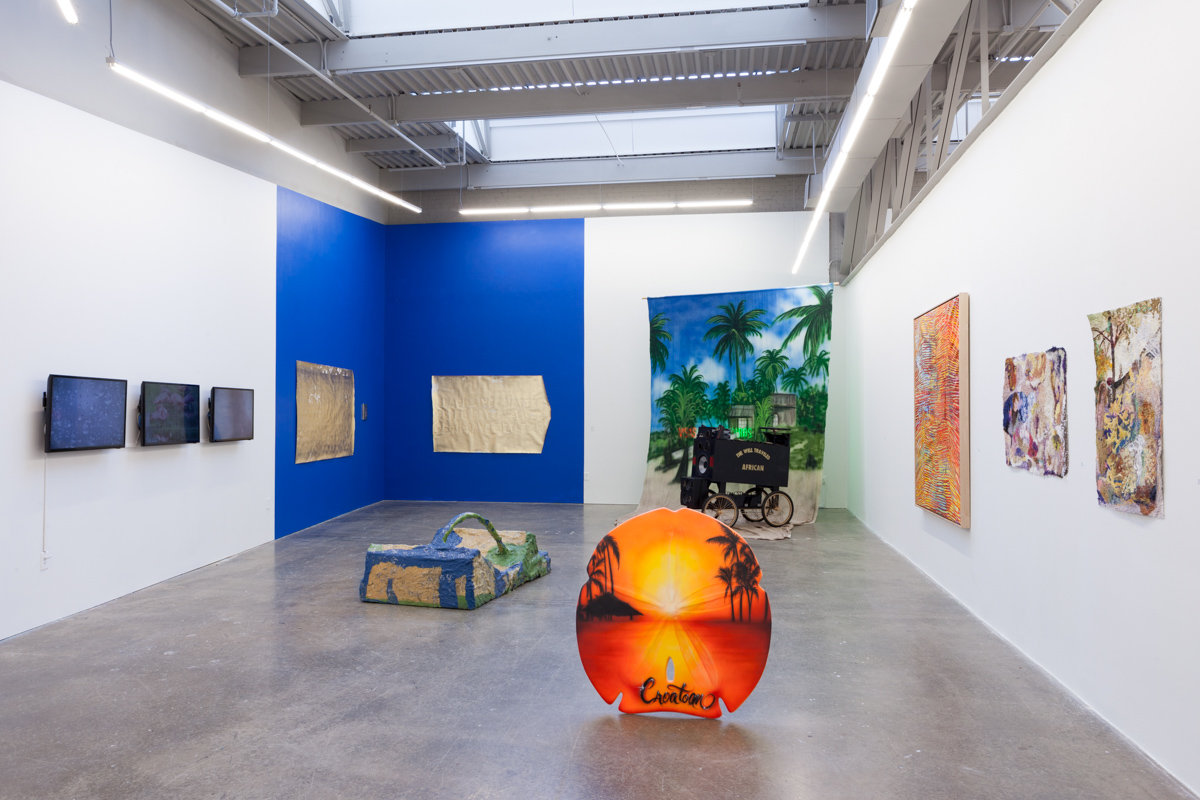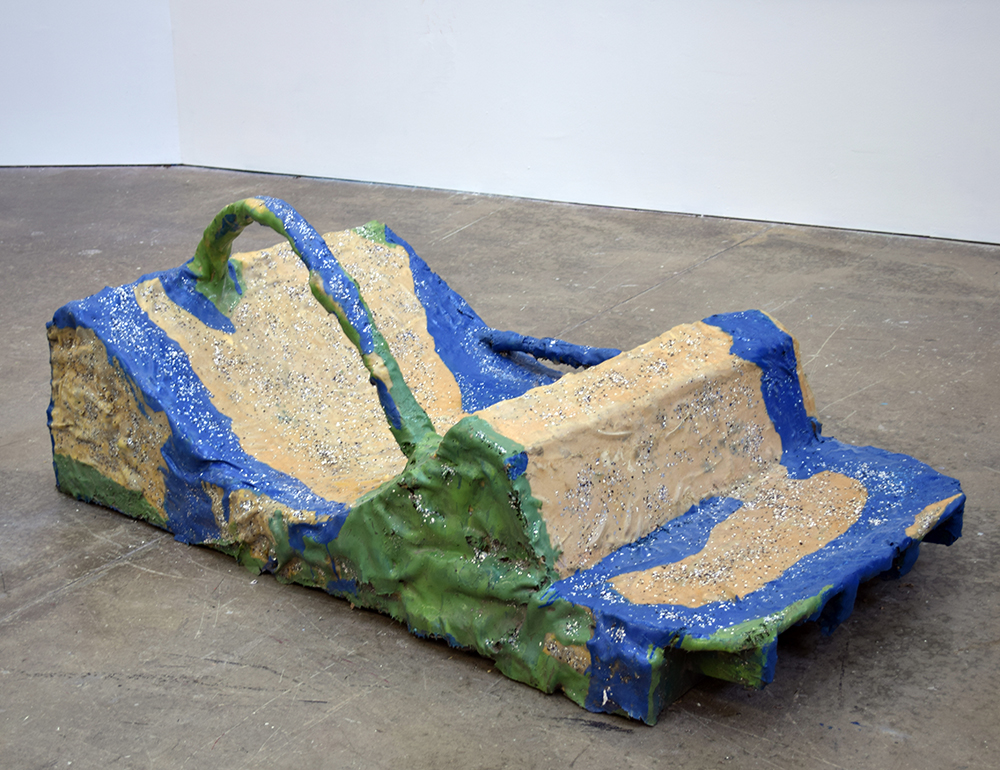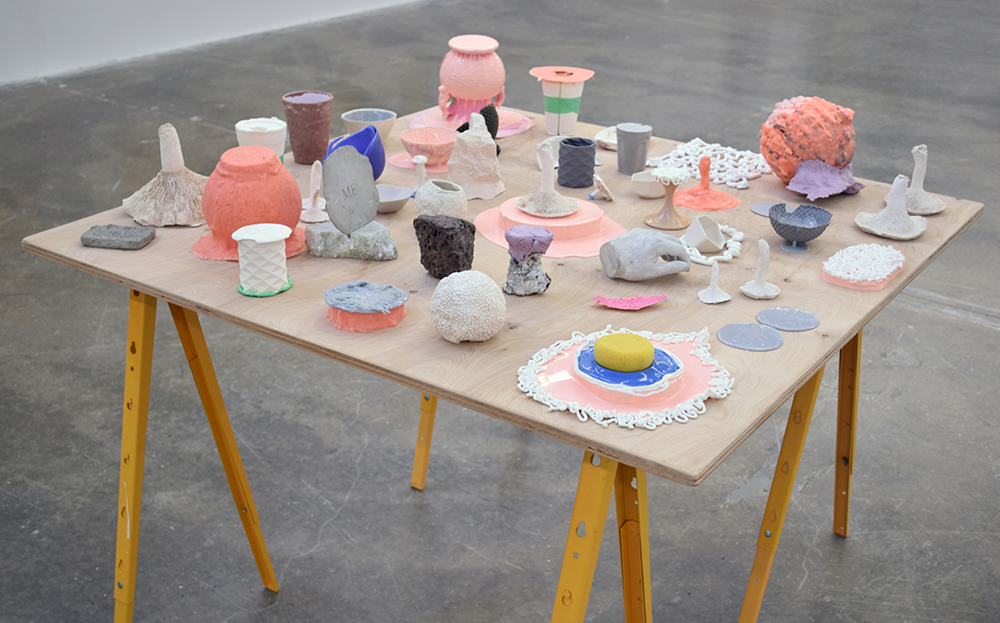Meanwhile in Atlanta, a Biennial is Reimagined
Curating the first Atlanta Biennial in nine years is no simple task; there’s a lot at stake for all involved. Not to mention, the Atlanta art scene in and of itself can be a complex environment to navigate. One factor in the complication is that the art scene’s political structure has been firmly in place since the early 1990s. Because of this fact, the city, for better or for worse, is unlike other art hubs around the world.
On top of this structural immobility, there is a quiet sense that the reason the art market hasn’t caught up to the burgeoning tech, real estate, or media market is because those in power don’t do a good enough job of supporting the community. Take for example a recent article covering the newly minted Biennial by a local arts journalist. The writer takes this opportunity to not review the exhibit on the merit of the art but instead opines over the geographical origins of the curators and the structure of the opening party. The article groans with self-righteous mediocrity as well as conflates several elements of the exhibition’s intent, including the meaning of the art historical term “visionary artist.”

Despite these dire predictions by some, Atlanta is a city known for contemporary art internationally. It has produced some of the most prolific artists working today, including Kara Walker, Roe Ethridge, and Kojo Griffin. The city has also sustained the careers of many ex-New Yorkers, including video pioneer Sara Hornbacher. A strong Biennial legacy is crucial, not only for the contemporary arts community and tourism, but also as we see contemporary art play a larger role in the inspiration and execution of music culture. Atlanta hip-hop itself is one of the city’s most important exports and has in the last ten years expanded its influence to include television franchises, fashion lines, and world-class recording studios.
Enter the first curatorial team to take on the task. Gia M. Hamilton, Victoria Camblin, Daniel Fuller, and Aaron Levi Garvey hail from three different states. For this exhibition, they set themselves the task of how to approach 2016 without falling into the political trappings of the past. The exhibition is the second Atlanta Biennial to include artists from all over the Southeast.

Miami-born and based Jillian Mayer has two sculptures in the exhibition: Slumpie 3-Q Chair and Slumpie 2-Daybed (2016). Both sculptures sit in the first gallery of the exhibition, with enough space for the personal privacy of the participant. “Slumpies” are fiberglass and resin sculptures whose sole purpose is to support the body in various positions in order to make access to one’s own personal device more comfortable. The artworks were recently featured in an article on the Huffington Post under their “Sleep and Wellness” section and touted as the solution to our ever-growing public posturing problems. The ubiquitousness of technology in our lives and dreams is a recurring theme in Mayer’s work.
Another work that directly engages and requests the viewer’s participation is Abigail Lucien’s Shy Shades, No. 1 (2016). The awning-like installation invites the viewer inside its plasticky canopy to hear a tropical loop of Caribbean cruise ship advertising buttressed against a voice reading passages of Gilles Deleuze’s “Desert Islands.” Lucien is of Haitian-American descent. The artist describes her life and work as occupying a “third-culture terrain.” The colonialist undertones of the cruise ship industry that offers American tourists a brief stay in “paradise” was clearly a culture shock to Lucien when she arrived in the U.S. from the Caribbean. Curator Daniel Fuller explains, “The artist was dismayed when she discovered how her homeland was completely misrepresented by these corporations to American tourists.” In her larger body of work, Lucien expands on other commercialized forms of nature and beauty, including a faux-cosmetic company titled “Nature’s Intent™.” The company advertises itself as specializing in hair care for an “acceptably natural you.” The artist currently lives and works in Knoxville, Tennessee.
Taking a less playful approach to postcolonial realities is Stacy Lynn Waddell’s BLACK LIVES MATTER (Transformation) (2016). Waddell’s work for the exhibition is constructed of untreated gold leaf on various kinds of paper with phrases like “Black Lives Matters,” “BLEEK MATTR ALIV C,” and “CRAK SAVE LITTLE BM” embossed on the surface. Art historically speaking, blue and gold are colors associated with royalty in Europe during the Middle Ages, but now are more commonly known as the colors adopted by U.S. police departments.

Equal Parts (2016) by Virginia Griswold runs the gamut as far as ceramic tendencies as of late. The installation includes voluptuous yet droopy works which hint at an anti-ceramics aesthetic. Hands, squishy ropes, awkward bowls, and upside-down mushrooms are placed on a workbench in opposition to a more traditional museum display. Ceramics as a process-based art form has become more prevalent in contemporary art. Griswold’s pieces can definitely be included as part of a visually unclassifiable genre in which the viewer can’t and shouldn’t be able to distinguish the skill level of the ceramicist. This new movement (unnamed as of yet) relishes the delicate balance of process, skill, and praise for the unusable domestic object.
Lyndsy Welgos is the founder and director of Topical Cream 501c3.